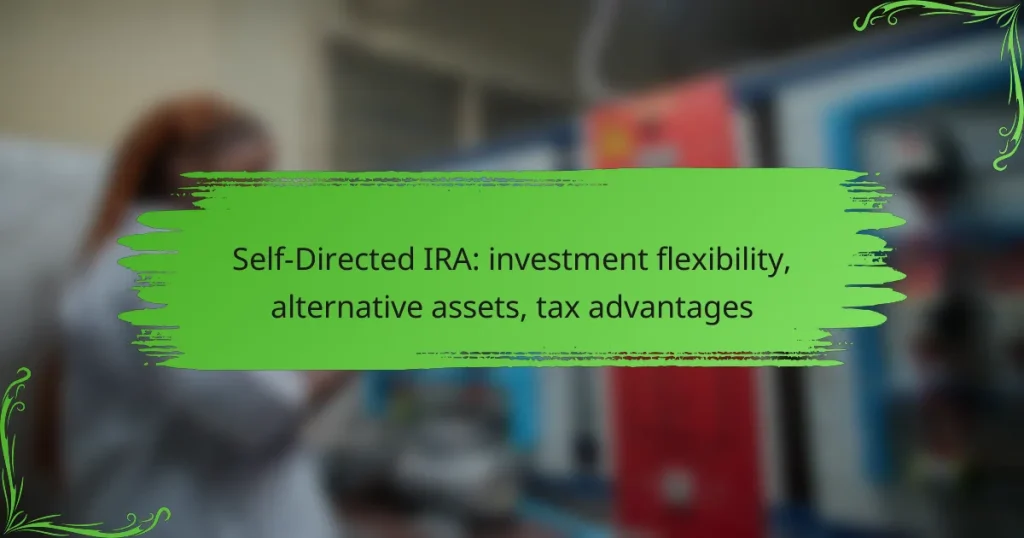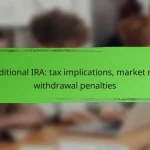A Self-Directed IRA empowers investors with remarkable flexibility by allowing them to diversify their portfolios with alternative assets such as real estate, precious metals, and cryptocurrencies. This investment approach not only aligns with individual strategies and risk tolerances but also offers significant tax advantages, including tax-deferred growth and potential tax-free withdrawals, particularly with Roth IRAs.
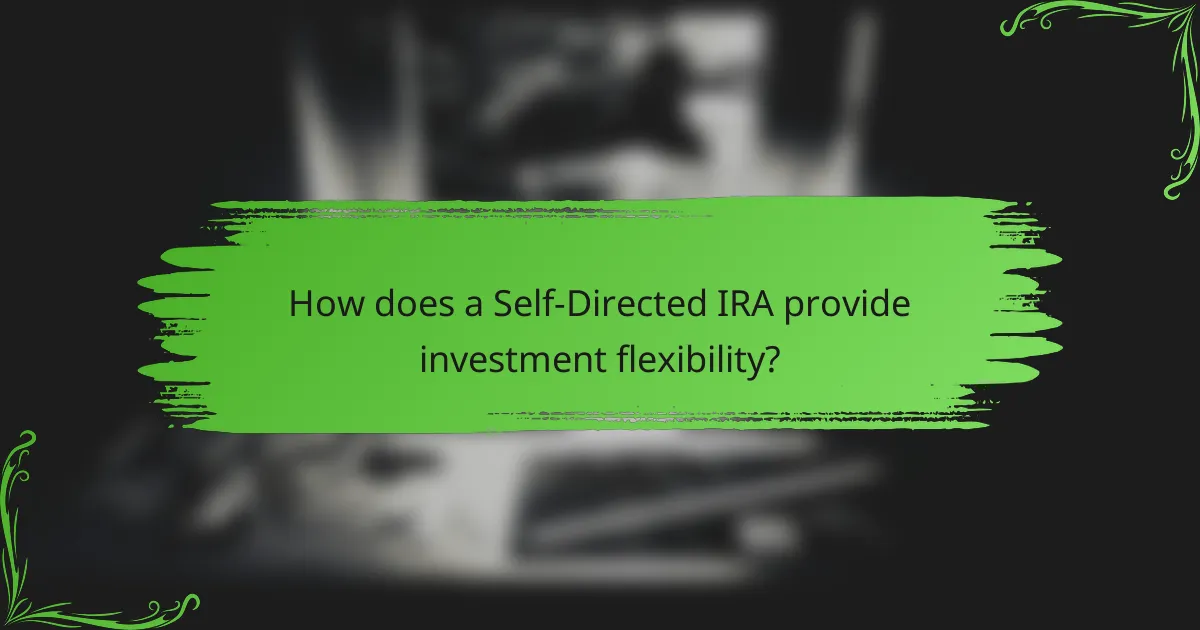
How does a Self-Directed IRA provide investment flexibility?
A Self-Directed IRA offers significant investment flexibility by allowing account holders to choose from a broader range of assets beyond traditional stocks and bonds. This flexibility enables individuals to tailor their retirement portfolios to align with their personal investment strategies and risk tolerance.
Access to alternative assets
Self-Directed IRAs grant access to a variety of alternative assets, including real estate, precious metals, private equity, and cryptocurrencies. This access allows investors to explore opportunities that may not be available through conventional retirement accounts.
For instance, an investor can purchase rental properties or invest in a startup company, potentially increasing their returns compared to traditional investments. However, it’s essential to conduct thorough due diligence on these assets to understand their risks and rewards.
Control over investment choices
With a Self-Directed IRA, investors have complete control over their investment choices, enabling them to make decisions that align with their financial goals. This autonomy allows for a more personalized approach to retirement planning.
Investors should be aware that while they have control, they must comply with IRS regulations, such as avoiding prohibited transactions. Familiarizing oneself with these rules can help prevent costly penalties.
Ability to diversify portfolios
A Self-Directed IRA enhances the ability to diversify portfolios by allowing investments in various asset classes. This diversification can help mitigate risk and improve the potential for returns over time.
For example, an investor might allocate funds across real estate, commodities, and private loans, balancing their portfolio against market volatility. It’s advisable to regularly review and adjust the asset allocation to maintain a well-diversified investment strategy.
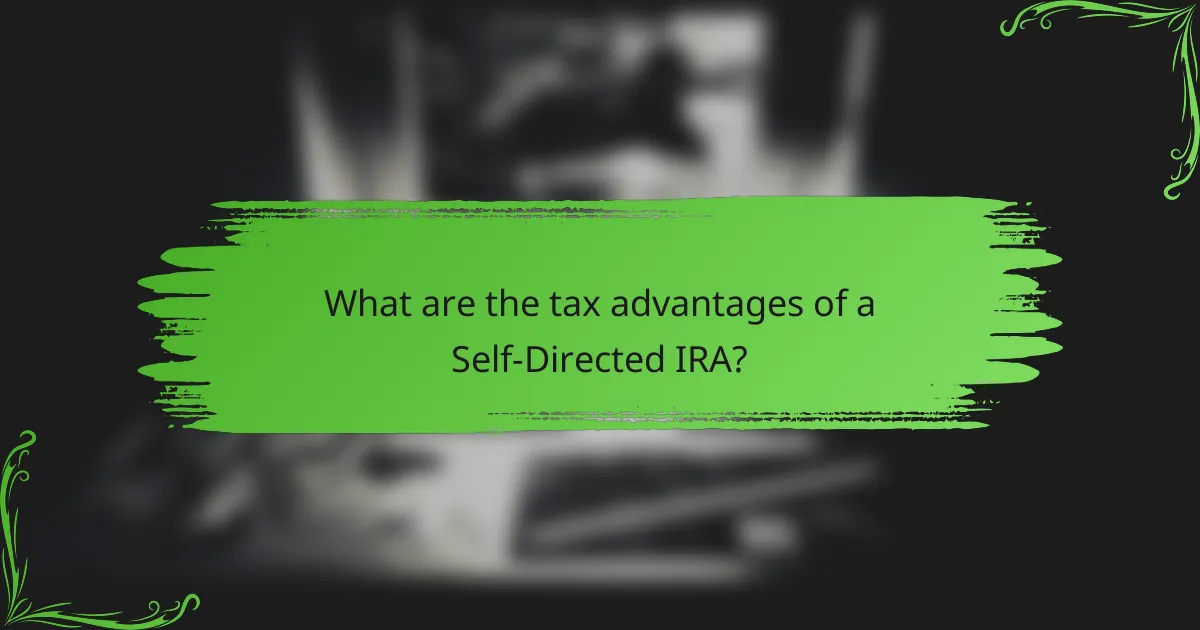
What are the tax advantages of a Self-Directed IRA?
A Self-Directed IRA offers significant tax advantages, including tax-deferred growth on investments and potential tax-free withdrawals, particularly with Roth IRAs. These benefits enable investors to maximize their returns while minimizing their tax liabilities.
Tax-deferred growth
With a Self-Directed IRA, the growth of your investments is tax-deferred, meaning you do not pay taxes on earnings until you withdraw funds. This allows your investments to compound over time without the immediate tax burden, potentially increasing your overall returns.
For example, if you invest in real estate or stocks within your Self-Directed IRA, any gains or income generated will not be taxed annually. Instead, taxes will only be due when distributions are taken, typically during retirement when you may be in a lower tax bracket.
Tax-free withdrawals in Roth IRAs
Roth IRAs provide a unique tax advantage where qualified withdrawals are entirely tax-free. This means that if you follow the rules, you can withdraw your contributions and earnings without incurring any taxes, making it an attractive option for long-term investors.
To qualify for tax-free withdrawals, you must be at least 59½ years old and have held the account for at least five years. This feature can significantly enhance your retirement income, as you can access your funds without worrying about tax implications.
Potential for lower capital gains taxes
Investments held within a Self-Directed IRA may also benefit from lower capital gains taxes compared to taxable accounts. Since the IRA is a tax-advantaged account, any capital gains realized from asset sales are not taxed until withdrawal, allowing for greater investment growth.
In some cases, if you hold assets long-term within the IRA, you may avoid capital gains taxes altogether if you opt for a Roth IRA and meet the withdrawal criteria. This can lead to substantial savings, especially for high-growth investments.
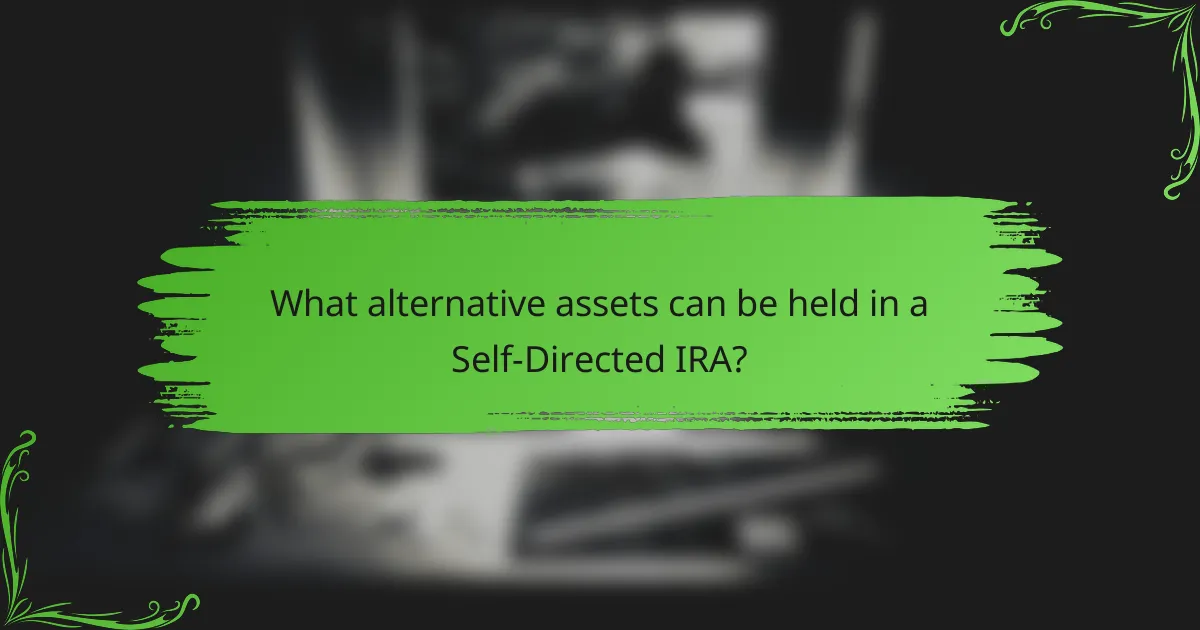
What alternative assets can be held in a Self-Directed IRA?
A Self-Directed IRA allows investors to hold a variety of alternative assets beyond traditional stocks and bonds. These can include real estate, precious metals, and cryptocurrencies, providing greater flexibility and potential for diversification.
Real estate investments
Investing in real estate through a Self-Directed IRA can include residential properties, commercial buildings, and raw land. This type of investment can generate rental income and appreciate in value over time, offering a hedge against inflation.
When considering real estate investments, ensure that the property is for investment purposes only and not for personal use. Additionally, all expenses related to the property must be paid from the IRA, and any income generated must go back into the IRA.
Precious metals
Self-Directed IRAs can hold physical precious metals such as gold, silver, platinum, and palladium. These metals must meet specific purity standards, typically 99.5% for gold and silver, to qualify for tax-advantaged status.
Investors should consider storage options, as the metals must be held in an IRS-approved depository. This adds an extra layer of security but may incur additional fees. It’s important to compare costs and services of different depositories before making a decision.
Cryptocurrency
Cryptocurrencies like Bitcoin and Ethereum can be included in a Self-Directed IRA, allowing investors to benefit from the potential growth of digital assets. This investment type is relatively new and can be volatile, so thorough research is essential.
When investing in cryptocurrency, choose a custodian that specializes in digital assets, as not all custodians offer this service. Be aware of the regulatory environment, as it can affect the legality and taxation of cryptocurrency investments in your IRA.

What are the prerequisites for opening a Self-Directed IRA?
To open a Self-Directed IRA, you must meet certain prerequisites, including being of legal age and having earned income. Additionally, you need to select a qualified custodian to manage the account and ensure compliance with IRS regulations.
Eligibility requirements
Individuals looking to open a Self-Directed IRA must be at least 18 years old and have earned income, which can come from wages, self-employment, or other sources. You cannot use funds from a traditional IRA or 401(k) to fund a Self-Directed IRA without following specific rollover procedures.
It’s crucial to ensure that you do not exceed the annual contribution limits set by the IRS, which are typically a few thousand dollars for most individuals. For those over a certain age, catch-up contributions may apply.
Choosing a custodian
Selecting a custodian is a critical step in opening a Self-Directed IRA, as they will hold your assets and ensure compliance with IRS rules. Look for custodians that specialize in Self-Directed IRAs and have a solid reputation in the industry.
When evaluating custodians, consider their fees, investment options, and customer service. Some custodians may charge a flat annual fee, while others may have transaction-based fees. It’s advisable to compare several options to find one that aligns with your investment strategy and budget.

How to choose the right custodian for a Self-Directed IRA?
Choosing the right custodian for a Self-Directed IRA is crucial for maximizing investment flexibility and ensuring compliance with tax regulations. Consider factors such as fees, services offered, and the custodian’s reputation to make an informed decision.
Fees and services comparison
When evaluating custodians, compare their fee structures, which can vary significantly. Some may charge flat annual fees, while others may take a percentage of your assets or charge per transaction. Look for custodians that offer transparent pricing and a range of services that align with your investment goals.
For instance, a custodian charging $300 annually may provide comprehensive support for alternative assets, while another with lower fees might not offer the same level of service. Always assess what services are included in the fees, such as account setup, transaction processing, and customer support.
Reputation and reviews
Researching a custodian’s reputation is essential for ensuring reliability and trustworthiness. Look for online reviews, testimonials, and ratings from current or past clients. Websites like the Better Business Bureau can provide insights into customer satisfaction and any complaints lodged against the custodian.
Additionally, consider how long the custodian has been in business and their experience with Self-Directed IRAs. A well-established custodian with a solid track record is often a safer choice than a newer firm. Engaging in forums or communities focused on self-directed investing can also yield valuable recommendations and warnings from fellow investors.
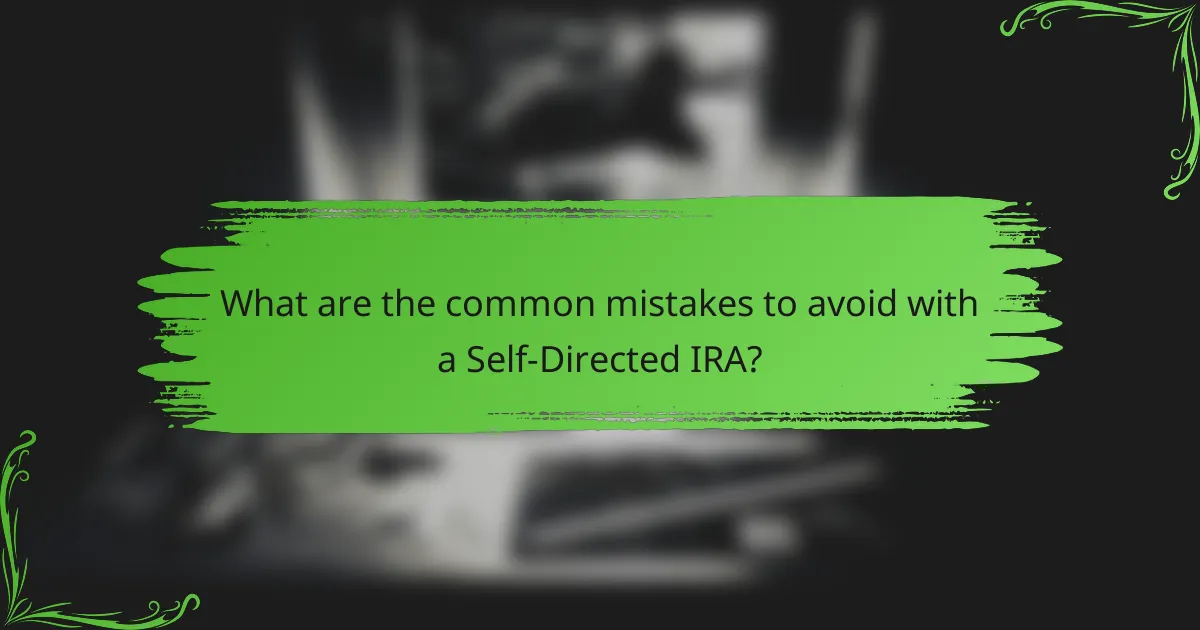
What are the common mistakes to avoid with a Self-Directed IRA?
A Self-Directed IRA offers significant investment flexibility, but there are common mistakes that can lead to penalties or disallowed transactions. Understanding these pitfalls is crucial for effective management and compliance.
Prohibited transactions
Prohibited transactions are activities that the IRS does not allow within a Self-Directed IRA. Engaging in these transactions can result in severe tax consequences or the disqualification of the IRA. Common prohibited transactions include selling property to or buying property from the IRA owner or their family members.
Additionally, using IRA funds to benefit oneself personally, such as paying for personal expenses or services, is strictly forbidden. To avoid these issues, always ensure that transactions are conducted at arm’s length and that all parties involved are independent.
It’s wise to consult with a tax advisor or a custodian familiar with Self-Directed IRAs to clarify what constitutes a prohibited transaction. Keeping thorough records and documentation can also help in maintaining compliance and avoiding costly mistakes.
